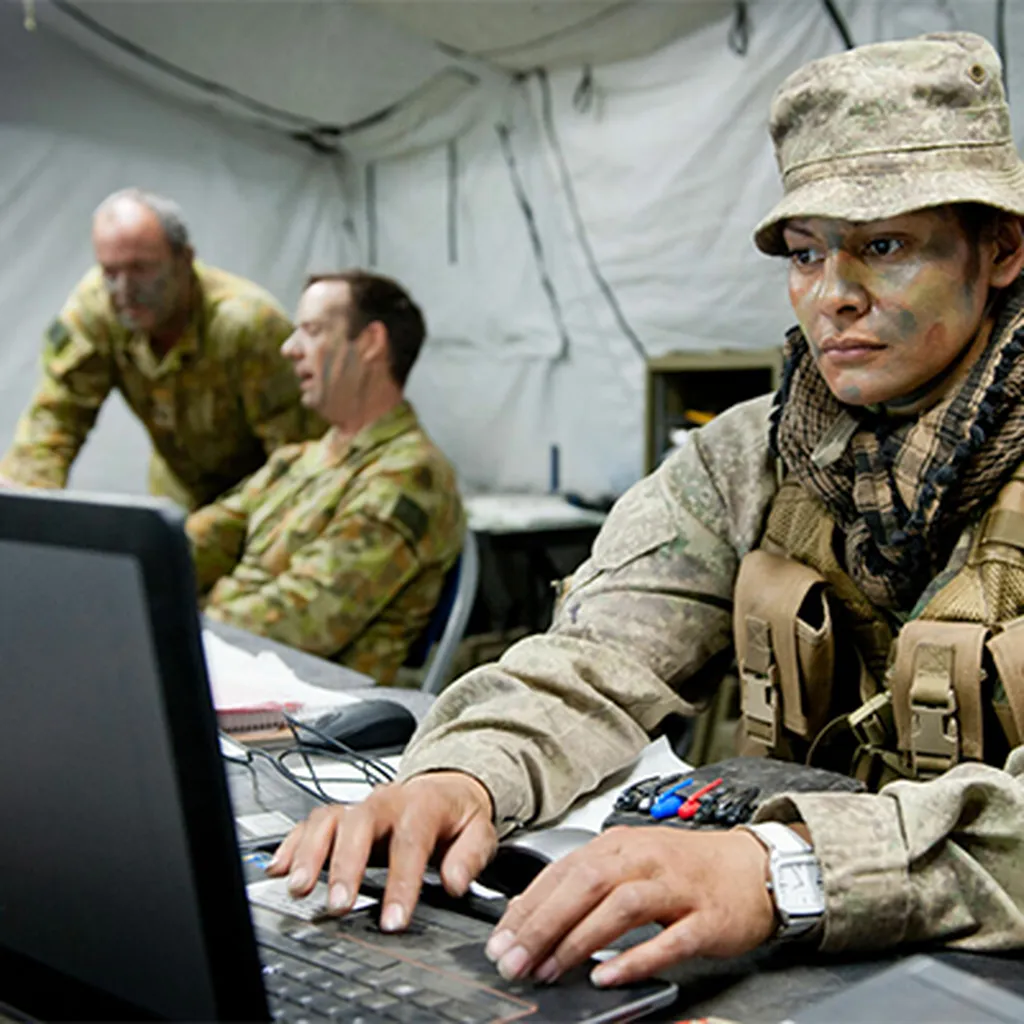In a groundbreaking study led by Indranil Sur and his team at the U.S. Army Combat Capabilities Development Command, researchers have developed a novel approach to enhance situational awareness and command and control (C2) in military operations. The team, comprising Aswin Raghavan, Abrar Rahman, James Z Hare, Daniel Cassenti, and Carl Busart, has introduced a multi-agent learning framework that promises to revolutionize the way unmanned platforms are managed in the battlefield.
The integration of unmanned platforms equipped with advanced sensors has the potential to significantly enhance situational awareness, but it also presents a formidable challenge: managing the vast influx of data from these platforms. Traditional C2 systems struggle to keep up with the sheer volume of information, often leading to delays and inaccuracies in decision-making. This is where the researchers’ innovative solution comes into play. Their method enables autonomous and secure communication between agents and humans, facilitating the real-time formation of an interpretable Common Operational Picture (COP). This COP encompasses the current state of all agents, both friendly and enemy, on the battlefield, providing commanders with a comprehensive and up-to-date view of the operational environment.
Each agent in the system encodes its perceptions and actions into compact vectors, which are then transmitted, received, and decoded to form the COP. This process is made possible through the use of Deep Reinforcement Learning (DRL), a type of machine learning that enables the agents to learn and adapt their behaviors based on feedback from the environment. The researchers have jointly trained COP models and the agents’ action selection policies, ensuring that the system is not only accurate but also resilient to degraded conditions such as denied GPS and disrupted communications.
The effectiveness of the system was validated in the Starcraft-2 simulation environment, where it demonstrated remarkable precision and robustness. The COPs generated by the system had less than 5% error, and the policies were resilient to various adversarial conditions. This level of accuracy and resilience is a significant improvement over existing systems and could greatly enhance the effectiveness of military operations.
The practical applications of this research are vast. The ability to autonomously form a COP and maintain it in real-time can greatly enhance situational awareness, enabling commanders to make more informed and timely decisions. The system’s resilience to degraded conditions ensures that it can continue to function effectively even in the most challenging environments. Moreover, the joint training of COP models and multi-agent RL policies allows for a more adaptive and resilient C2 system, facilitating effective control of heterogeneous unmanned platforms.
In summary, the researchers have made significant strides in advancing adaptive and resilient C2, paving the way for more effective and efficient management of unmanned platforms in military operations. Their innovative approach to COP formation and multi-agent reinforcement learning holds great promise for the future of defence and security.Read more at arXiv.

